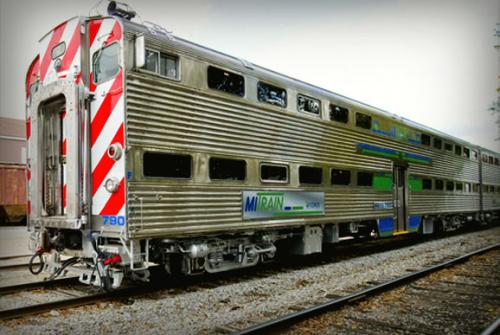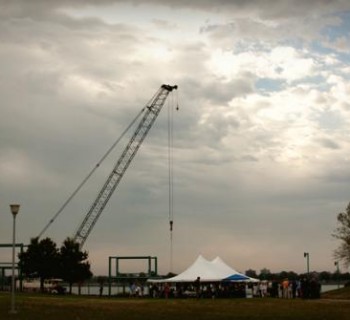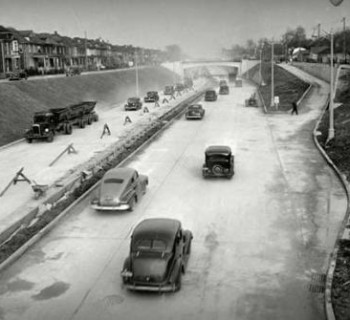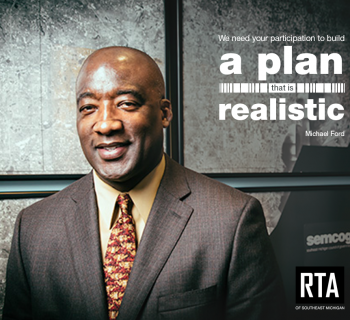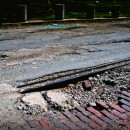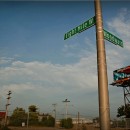SOUTHEAST, Mich.—The list of transit options promised to residents of Southeastern Michigan has grown considerably over the past year. And during the time that the M-1 street car and bus rapid transit systems have received all the press, it's been almost easy to forget that it was only a few years ago that Southeast Michigan Council of Goverments and Michigan Department of Transportation announced plans for a Detroit-to-Ann-Arbor commuter rail line.
Perhaps even more overshadowed is another commuter rail line, the Ann Arbor Transit Authority's Washtenaw and Livingston Line, which will run the corridor that connects Ann Arbor to Howell to the north.
Assembling a commuter rail line is no easy task, and while many hurdles remain, a few very important ones have recently been cleared. The lines have secured their passenger cars and in November they were cleared for use by both Amtrak and the Federal Railroad Administration. Now, securing funding and building train stations remain as top priorities.
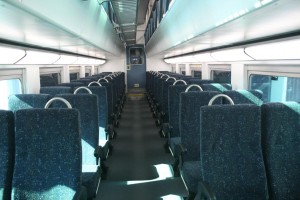 The passenger cars are refurbished Metra commuter rail cars on long-term lease from Great Lakes Central Railroad. The Owosso, Michigan-based company purchased 50 passenger cars from the Illinois commuter line Metra. They entered a lease agreement with MDOT in 2009, with MDOT leasing 23 of the 50 passenger cars.
The passenger cars are refurbished Metra commuter rail cars on long-term lease from Great Lakes Central Railroad. The Owosso, Michigan-based company purchased 50 passenger cars from the Illinois commuter line Metra. They entered a lease agreement with MDOT in 2009, with MDOT leasing 23 of the 50 passenger cars.
Chris Bagwell, project manager with GLC Railroad, said that though the cars were in good shape, they were in need of modernization.
“The trucks and wheels were completely overhauled, the inside was sanded and painted blue and white, and a new address and intercom system was installed,” said Bagwell. “All new seating, new floors. [Americans with Disabilities Act] features were added per regulation, door alarm systems added, corrosion removed, brake systems overhauled, and [they were] inspected by MDOT, SEMCOG, FRA, ADA, LTK Engineering, and Quandel Consulting.”
Carmine Palombo is the director of transportation planning at SEMCOG. Seeing the completed passenger cars has stoked his excitement for the day when the public can “walk through them and touch them.”
“Great Lakes Central Railroad has done wonderful work on these cars,” Polombo said. “The new glass, new floors, new seats. They're double-decker cars like the ones in the Jake Gyllenhaal movie.”
Fortunately for MDOT, SEMCOG, AATA, and everyone else involved in the November 2012 test run of the passenger cars, the trip from Pontiac to Jackson and back didn't resemble the disaster-thriller Source Code that Palombo mentions. The two day trip was wholly uneventful, which is just what everyone had hoped.
On Nov. 13 and 14 of last year, officials leased an Amtrak locomotive to pull six refurbished passenger cars along the track that runs from Pontiac to Jackson — the same track used by Amtrak's Pontiac-to-Chicago Wolverine line. The successful test was especially useful for the Detroit-to-Ann-Arbor line, as MDOT is contracting Amtrak locomotives and crew to operate the commuter train. The AATA has not yet decided who will operate their WALLY line.
Now that the passenger cars are approved for public use, Palombo says that the line could begin running as early as this summer. Though funding for ongoing daily operations remains elusive, Palombo says that the Detroit-to-Ann-Arbor line would like to start special train operations for events like the Detroit fireworks, Thanksgiving parade, and baseball and football games. This provides officials the opportunity to excite potential passengers.
“Now that we have the cars and Amtrak has the experience operating the cars, [the special event trains] could show people the possibility of the project,” Palombo said.
When it comes to funding both the Detroit-to-Ann-Arbor and WALLY lines, getting people excited for commuter rail will go a long way in securing funding for ongoing daily operations. Palombo is hopeful that the recent decision to create a Regional Transit Authority will help speed the process along, but the RTA itself won't even be fully formed and functioning until late spring or early summer.
“We need to get people excited about the opportunity and get them talking to the state legislature for funding. We're waiting on the Regional Transit Authority's formation, and we're going to work with them and see where it fits in their priorities." - Carmine Polombo
And then there are the actual rails and train stations to address, too. Palombo estimates two construction seasons before the rails are in the shape necessary for five daily trips between Ann Arbor and Detroit. Many existing Amtrak stations will be used, but one of the potential stops, at Michigan Avenue and Henry Ruff in Westland, will have to be built from scratch. This station would serve as a hub for a shuttle connection to Detroit Metro Airport.
The stops along the Detroit-to-Ann-Arbor commuter line are currently Ann Arbor, Ypsilanti, Westland, Dearborn, and Detroit. The stops along the WALLY commuter line are currently Howell, Genoa Township, Hamburg Township, 8 Mile Road at Whitmore Lake, Barton Drive in northern Ann Arbor, downtown Ann Arbor, and a stop in southern Ann Arbor. There are no plans to connect the two commuter lines directly, but some sort of bus service between the two is a possible development.
Officials at the AATA estimate that the WALLY line would service 1,300 passengers a day along a roughly 26 mile track.
Of course, the AATA is facing the same issues currently being addressed by the Detroit-to-Ann-Arbor line: station location, track conditions, and operating costs.
“It all depends on funding,” said Michael Benham, special assistant for strategic planning at the AATA. “If money were no object, technical and engineering issues could be solved in a year.”
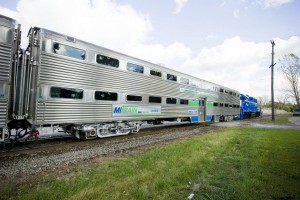 Money, however, remains an object. And while the state and federal governments have paid for refurbishing passenger cars and significant track improvements, just where the commuter lines will find funding for daily operations is still unidentified.
Money, however, remains an object. And while the state and federal governments have paid for refurbishing passenger cars and significant track improvements, just where the commuter lines will find funding for daily operations is still unidentified.
“There needs to be a funding formula at the local level because it's unlikely that federal grants will pay for ongoing operating costs,” said Benham. “Community rail authorities? Public-private partnerships? We need political support.”
Carmine Palombo agrees, identifying two essential elements in garnering support.
“We need to get people excited about the opportunity and get them talking to the state legislature for funding,” Palombo said. “We're waiting on the Regional Transit Authority's formation, and we're going to work with them and see where it fits in their priorities.”


